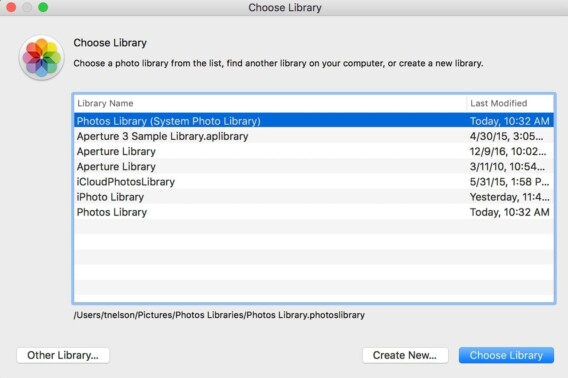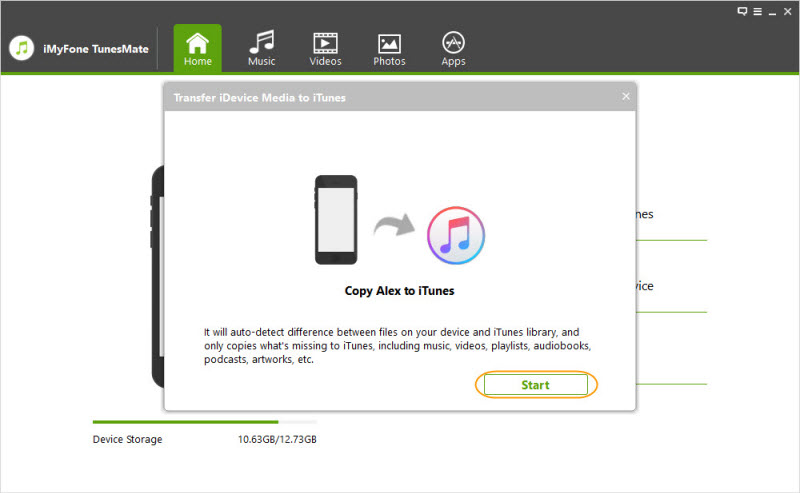Download this app from Microsoft Store for Windows 10, Windows 8.1, Windows 10 Mobile, Windows Phone 8.1, Windows Phone 8. See screenshots, read the latest customer reviews, and compare ratings for Combine Images.
- How To Merge Two Photos Libraries
- Merge Two Photos Libraries Mac
- How To Merge Two Photos Libraries
- Merge Two Photos Libraries
- How Do You Merge Two Photos Libraries On Mac
With multiple libraries on your Mac, you can switch between them very easily using two methods. The first is using the same library manager, so simply quit and relaunch Photos with the Option key held, and you can then select your library. However, an even easier approach is to simply open any of your photo libraries directly in the Finder,. Migrate both iPhoto libraries to Photos libraries and merge the two Photos libraries into one with the public Beta version of PowerPhotos that can be downloaded at the bottom of this webpage: Fat Cat Software Blog. As usual make sure your libraries are backed up before using the software. I'd like to merge two macOS Photos libraries into one, with the ability to weed out duplicates during the process. I just sold an old Mac and moved its Photos library onto another Mac with its own existing Photos library. Now I want to merge these two libraries into a single one. PowerPhotos advertises itself as being able to merge libraries.
To combine Photos libraries, export the photos from a previous library or library you no longer want to use, then import the photos to your primary library.
Export photos from your library
- Press and hold the Option key as you open the Photos app.
- Select the Library that you no longer want, then click Choose Library.
- Choose View > Photos > Library, then click All Photos.
- Choose Edit > Select All to select all items in your library.
- Choose File > Export, then choose an option:
- To export your photos as-is and preserve any edits, choose “Export [number] Photos,” then select any additional options.1
- To export your photos as unmodified originals (without edits), choose “Export Unmodified Original for [number] Photos,” then select any additional options.2 If your photos include IPTC metadata (such as titles or keywords) that you want to keep, select the Export IPTC as XMP checkbox.
- Click Export, choose a destination to save your photos, click New Folder and enter a name for the folder, click Create, then click Export.
Import photos to your primary library
How To Merge Two Photos Libraries
- Quit Photos, then press and hold the Option key as you open the Photos app.
- Select the library that you want to import your photos to, then click Choose Library.
- Choose File > Import.
- In the Import window, navigate to the Finder folder that contains the photos and videos that you want to import.
- Select the photos and videos to import, then choose Review for Import.
- Click Import All New Photos.
If you created subfolders when you exported the items and you want to create an Album for each subfolder, follow these steps:
- In the Import window, select the folders you want to import as albums.
- Select the Keep Folder Organization checkbox in the upper corner of the window. The top level folder is imported as a folder in Photos, and subfolders are imported as albums.
Save space by deleting the previous library
After you combine libraries and confirm your photos imported successfully, you can save space by deleting the library that you no longer need. Find the first Photos library and move it to the trash, then choose Finder > Empty Trash to permanently delete the files.
1.To find only edited photos in your library, you can create a smart album that has“Photo is edited” as a criteria for the album.
2. If your photos aren't captured on an iPhone or iPad, you may need to export photos in their original format.
Photos makes it easy to create and switch between libraries. That’s good when photos need to be kept completely separate. For instance, a real estate agent might want to keep personal photos separate from house photos taken for work. But too much separation is annoying—you have to keep switching between libraries, and it’s easy to import new photos into the wrong one.
If you struggle with multiple Photos libraries, never fear—you can merge them. Unfortunately, the process is slow, can require a lot of disk space, and may result in the loss of some metadata. If this is enough to scare you off then read no further. Keep using multiple libraries by subject or year, it helps to keep the libraries smaller and quicker to open and peruse. But if you must merge, read on. You have three options: merging through iCloud Photos, using the PowerPhotos utility, and merging by exporting and importing. Each has pros and cons.
Merge through iCloud Photos
Apple’s iCloud Photos service offers the best solution for merging libraries. The trick is that whenever you designate a library as your System Photo Library, Photos automatically uploads all images that aren’t already present, adding them to the photos already in iCloud Photos. It also retains all the metadata surrounding your photos—titles, keywords, albums, facial recognition, projects, and more.
On the downside, using iCloud Photos almost certainly won’t be free unless you have so few photos that the combined library will fit within the free 5 GB of iCloud space Apple gives everyone. Almost everyone will have to pay for additional storage space ($0.99 per month for 50 GB, $2.99 for 200 GB, or $9.99 for 2 TB) for at least the month in which you’re doing the merge. iCloud Photos is a good service, so it’s likely worth paying for anyway.
More problematic is that the iCloud Photos way of merging will be very slow. If you haven’t already started using it, it could take a week or more to upload many thousands of photos. Plus, it will probably download the entire cloud-based collection of photos to each library whose photos you want to merge, so you may need a lot of local disk space too. If you don’t have the disk space to take all your photos you can go into Photos Preferences and Check the ‘Optimize Mac Storage’. This way you can limit the amount of originals and space they take up on your Hard Drive. All the photos you have are available, but you’ll need an internet connection to view the full-resolution image or do any editing. Not a deal-killer for most. It’s a convenient way to have access to all your photos without filling up your computer.
If you haven’t previously used iCloud Photos, go to System Preferences > iCloud and click the Options button next to Photo. In the dialog, select iCloud Photos.
Now, starting with the smallest Photos library and working up in size, follow these steps for each library you want to merge:
Double-click the Photos library to open it.
In Photos > Preferences > General, click Use as System Photo Library. (If it’s dimmed out, that library is already set as the System Photo Library.)
Wait for photos to upload. Scroll to the bottom of the Photos view to see the progress. A Pause link will appear there during uploading—click it if you need to keep Photos from overwhelming your Internet connection. Once the photos have all uploaded, go back to Step 1 with your next Photos library.
When you’re done, the last Photos library becomes the one you’ll keep, and you can delete the others. Needless to say, make sure you have good backups first!
Merge with PowerPhotos

The $30 PowerPhotos from Fat Cat Software provides a variety of extra capabilities when working with Photos. It helps you to create and manage multiple libraries, copy photos between libraries, find duplicates, and—most important for this topic—merge libraries.
Because PowerPhotos is working entirely on your Mac’s drive, it’s fast and it doesn’t require huge amounts of extra disk space. Unfortunately, unlike the iCloud Photos approach, which brings in both originals and any edits to those photos, PowerPhotos can import only your original photos or the versions that you’ve edited, not both. Plus, it can’t merge facial recognition data, smart albums, or print projects.
PowerPhotos provides an actual interface for merging too—choose Library > Merge Libraries to start.
Merge Two Photos Libraries Mac
In the window that appears, you have four tasks:
Choose source libraries. You aren’t limited to merging just two libraries; you can pick multiple sources.
Choose the destination library. This is the library you want to receive all the photos. If you want, you can create a new one.
Configure duplicate handling. PowerPhotos can import just one of several copies of duplicate photos, or you can bring in all the duplicates if that’s important.
Choose options. PowerPhotos can merge album contents, create an album from each source library, and create a backup before merging. Most important, though, is the choice of whether to merge your original photos or the edited versions.


Merge by Exporting and Importing
How To Merge Two Photos Libraries
This final option is conceptually simple. You export all the photos from one library and then import them into another. It’s even what Apple recommends. The main thing it has going for it is that it’s free, and it will be faster than the iCloud Photos approach. It could also be useful if you want to copy a subset of photos between libraries, rather than merging all photos.
However, as with PowerPhotos, you have to choose between original and edited photos, and you’ll need a lot of extra disk space. Even worse, you’ll lose even more metadata, including albums, faces, and print projects. And if you export as JPEG, your photos may also suffer a slight quality drop as they’re recompressed.
Merge Two Photos Libraries
For those who want to use this approach, Apple provides detailed instructions. In essence, you’ll click Photos in the sidebar to see everything, and then choose Edit > Select All. Then you’ll choose File > Export and either Export X Photos (to get the edited versions of images) or Export Unmodified Original for X Photos (to get the original images). Once everything has exported, you’ll switch libraries in Photos and then drag the folder of exported images back into Photos to import it.
How Do You Merge Two Photos Libraries On Mac
Our nod goes to the iCloud Photos technique, but PowerPhotos is a fine utility for those who aren’t perturbed by its limitations. Of course, don’t start any merging without making backups first, and if you need help, don’t hesitate to call us (preferably before you embark on the merging).